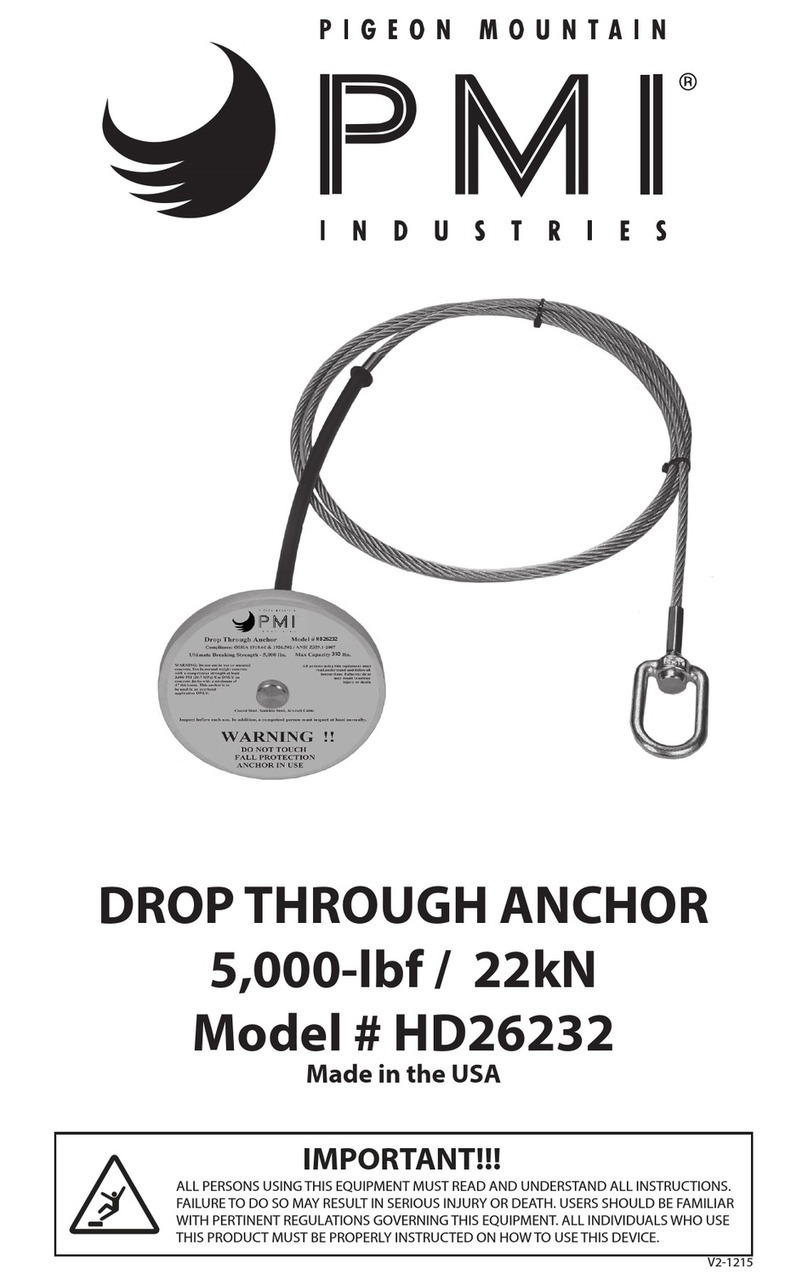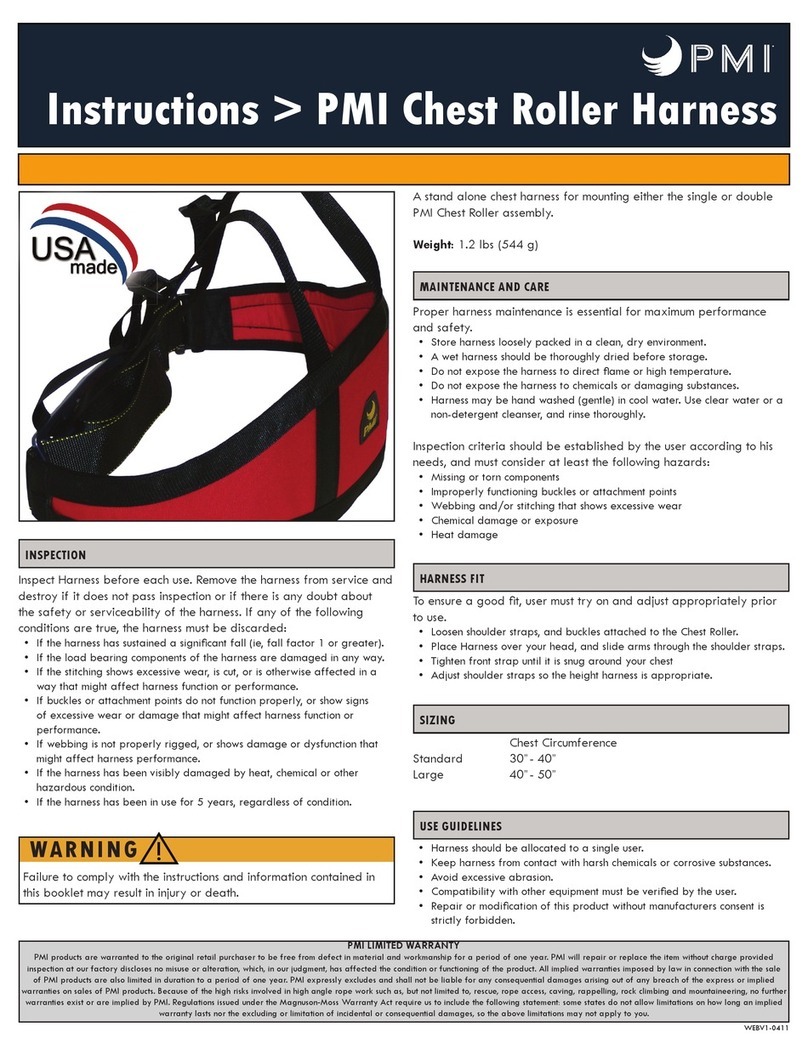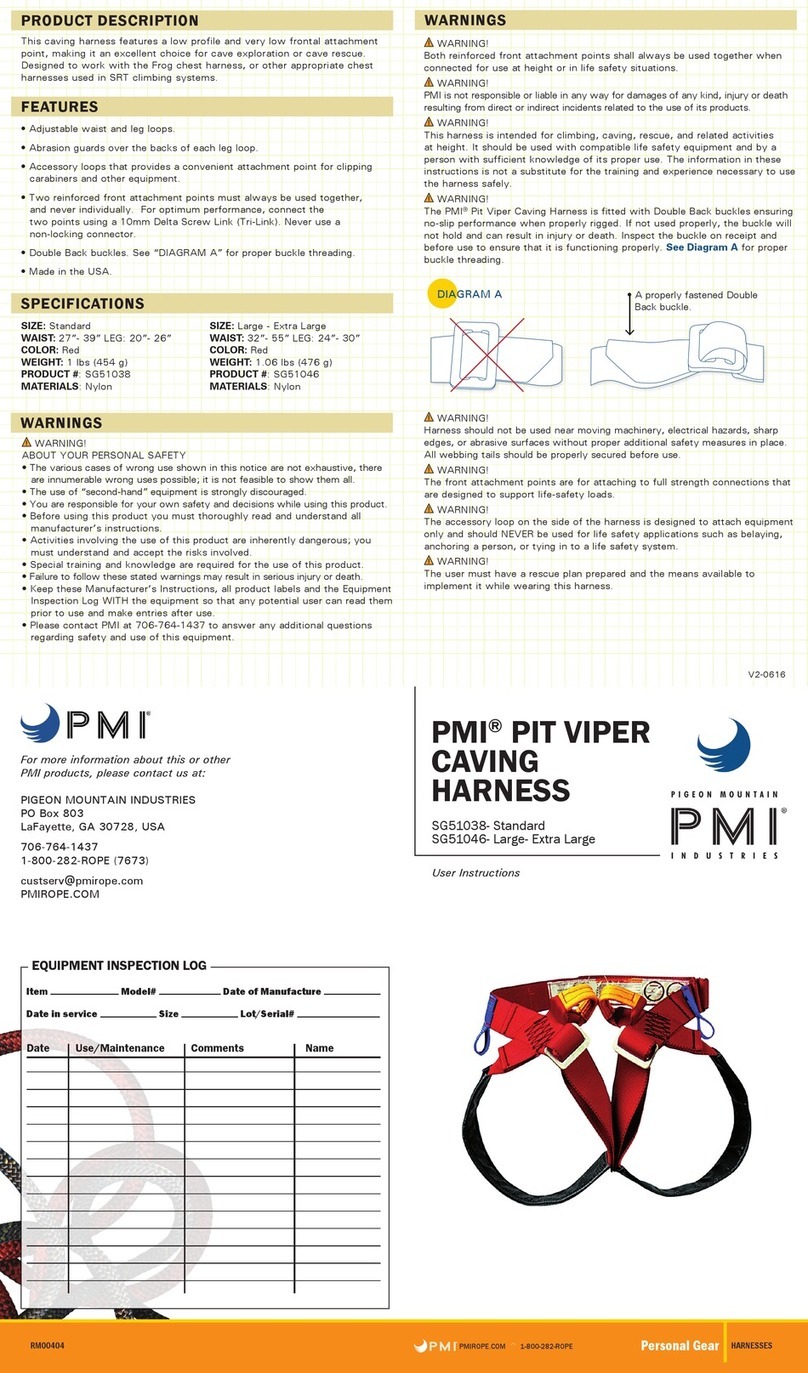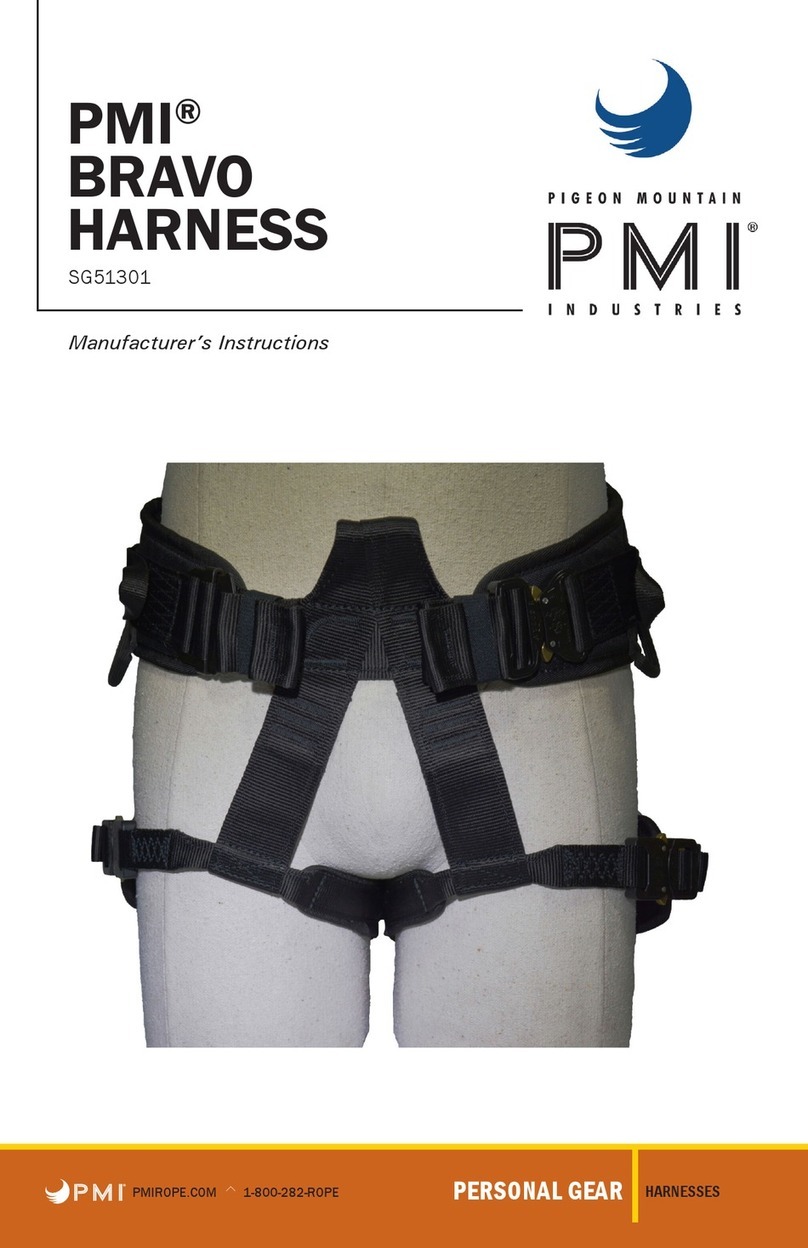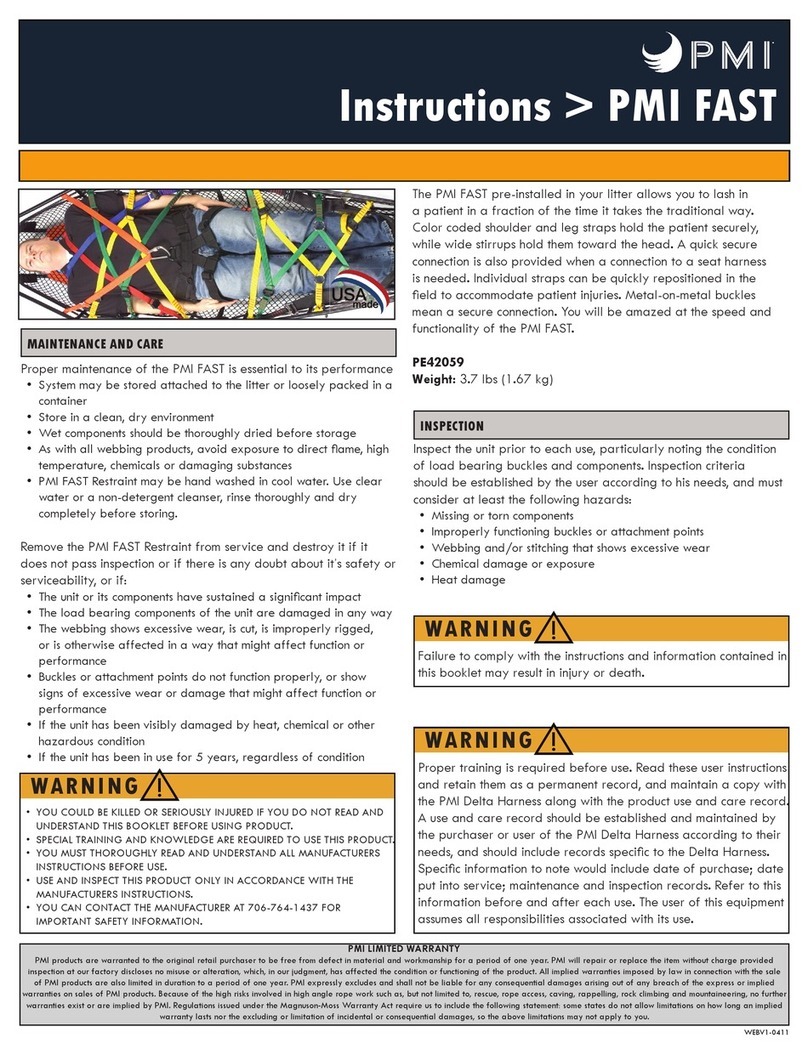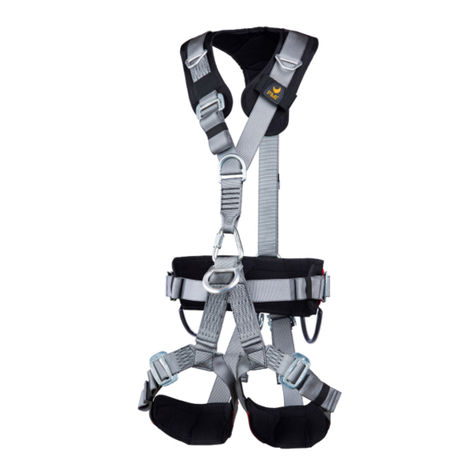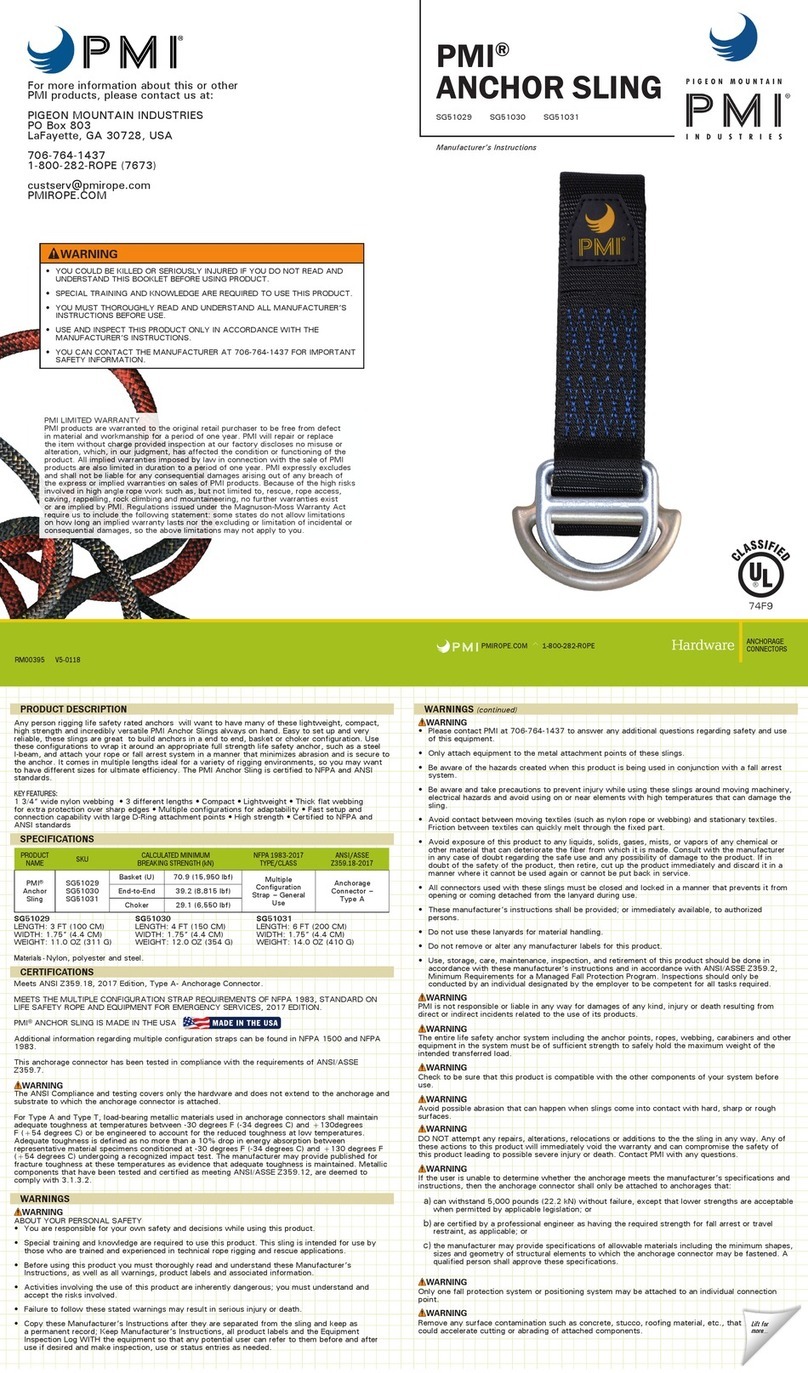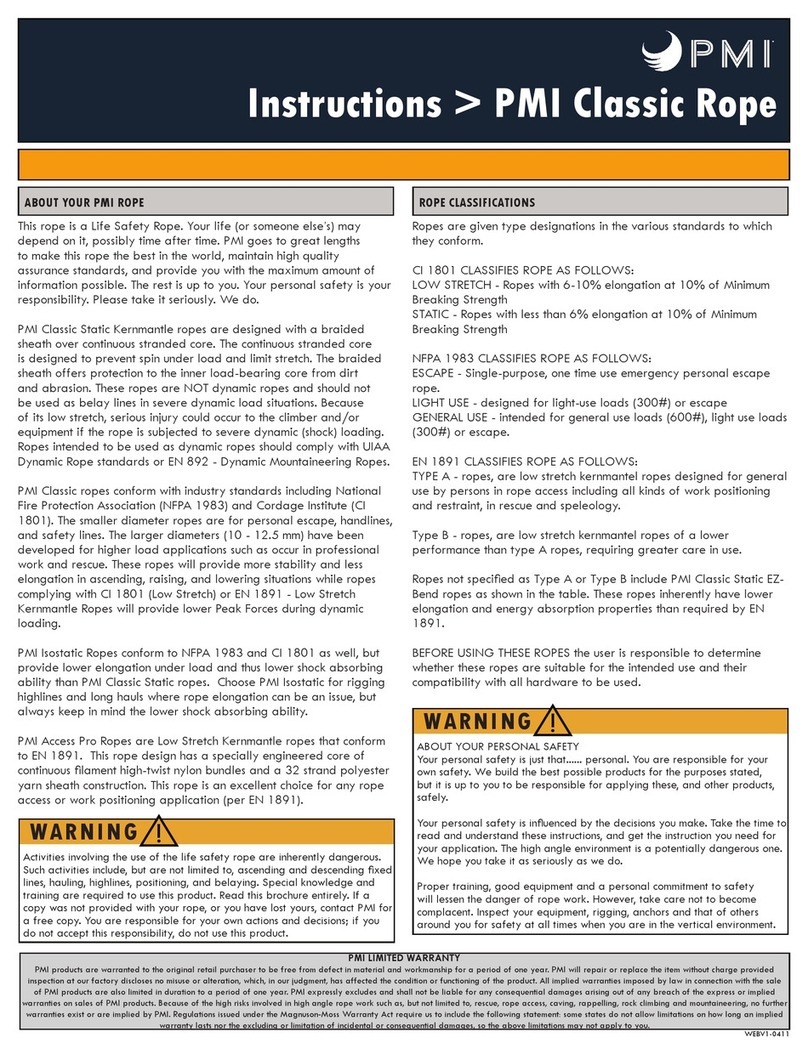
4
WARNINGS (continued)
Harness should not be used near moving machinery, electrical hazards,
sharp edges, or abrasive surfaces without proper additional safety
equipment in place. In addition, harness should be carried where it will be
protected, as the harness could melt or burn and fail if exposed to ame or
high temperature.
All webbing tails should be properly secured before use.
This harness is tted with safety buckles that ensure no slip performance
when properly rigged. If not used properly, the buckle will not hold and can
result in injury or death. Inspect the buckle on receipt and before use to
ensure that the two part buckle design is functioning properly.
The user must have a rescue plan prepared and the means available to
implement it while wearing this harness.
For any safety information regarding this harness refer to all Manufacturer’s/
User Instructions that shall remain available before and after use of this
product.
Use and inspect this product only in accordance with the manufacturer’s
instructions.
The main attachment D-rings (sternal, dorsal, and waist) are for attaching
to full strength anchors used to support life-safety loads. Equipment such
as life safety lanyards, descenders, ascenders, and fall arrest systems are
to be attached to these points in accordance with applicable standards and
regulations.
The side D-rings are for work positioning only and designed to be used as a
pair with an appropriate work positioning lanyard. The side D-rings are NOT
to be used as life safety attachment points.
The accessory loops are designed to attach equipment only and should
NEVER be used for life safety applications such as belaying, anchoring a
person, or tying in to a life safety system.
DO NOT alter or repair this product in any way. Any attempt will cancel
the manufacturer’s warranty and could compromise the safety of the
product causing serious injury or death. Only the equipment manufacturer,
or persons or entities authorized in writing by the manufacturer, can make
repairs to the equipment.
These manufacturer’s instructions shall be provided to the users of the
harness.
Make a copy and keep these manufacturer’s instructions, all product labels
and the equipment inspection log WITH the equipment so that any potential
user can read them prior to use and make entries after use.
Use caution when using combinations of components or sub-systems, or
both, which may aect or interfere with the safe function of each other.
The maximum value from testing the stretch of this full body harness was
8.5 inches. You must include this length and other factors such as D-ring/
connector length, settling of the user’s body and all other contributing
elements when calculating fall clearance.
PMI is not responsible or liable in any way for damages of any kind, injury
or death resulting from direct or indirect incidents related to the use of its
products.
If in doubt about this use of this product or for any additional questions,
please contact PMI at 706-764-1437 before using this product.












